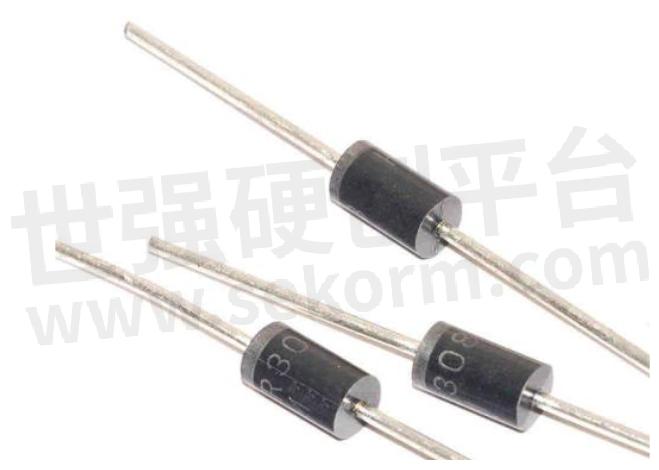Power Diode Problem Introduction

1. What is the forward current rating of the power diode? The rated current of the diode is the main nominal value of the diode, such as a 5A/100V diode, and 5A is the rated current. Usually the rated current is defined as the rated average current that the diode can pass. However, some tests are square waves before the test, that is, the square wave current with an average value of 5A can be passed. Some of the test conditions are DC, which is the ability to pass 5A DC current. Theoretically, for a silicon diode, a diode with a square wave as a test condition can pass a larger DC current because the square wave of the same average current will cause more loss to the diode than the DC current. So can the 5A diode pass the 5A current? Not necessarily, this is temperature dependent. When your heat dissipation conditions are not good enough, the current that the diode can pass will be limited by the junction temperature.
2. What is the reverse rated voltage of the diode? When the diode is reverse-cut, it can withstand a certain back pressure, then its highest tolerable back pressure is the rated voltage. For example, a 5A/100V diode has a rated back pressure of 100V. Although all diode manufacturers will leave a certain margin, 100V diodes usually use 110V, there is no problem, but it is not recommended, because the manufacturer will not guarantee its reliability if it exceeds the rated value. The problem is that you The problem is. And many power design companies, in order to ensure reliability, will also deduct the design.
3. What is the forward current of the diode? Switching power supplies require a diode to withstand large inrush currents during startup or other transient conditions. Of course, this inrush current should be non-repetitive or long-interval. Usually the diode's data sheet defines this inrush current. The test conditions are often the inrush current of a single waveform, such as a single sine wave, or a square wave. Its current value can often reach several hundred A.
4. What is the forward voltage drop of the diode? The diode is in a forward conduction, and a voltage drop occurs when a current flows. This voltage drop is related to the forward current and temperature. Usually silicon diodes, the greater the current, the greater the voltage drop. The higher the temperature, the smaller the pressure drop. But the silicon carbide diode is the higher the temperature, the greater the pressure drop.
5. What is the reverse leakage current of the diode? When the diode is turned off in the reverse direction, it is not a perfectly ideal cutoff. When subjected to back pressure, some tiny current leaks from the cathode to the anode. This current is usually small, and the higher the back pressure, the larger the leakage current, and the higher the temperature, the larger the leakage current. Large leakage currents can cause large losses, especially in high voltage applications.

Fig.1
- +1 Like
- Add to Favorites
Recommend
- Quickly Determine The Forward Voltage of A Power Diode with A Bench Power Supply and Excel
- Main Differences between Unipolar Power Diodes and Bipolar Power Diodes
- The Voltage Regulator Diode MM3Z3V3 Features A Maximum Power Dissipation of 300mW and A Stable Voltage Value of 3.3V
- The Voltage Regulator Diode ZMM24 with A Breakdown Voltage of 24V and A Maximum Power Dissipation of 500mW
- Slkor ZMM10: A High-Performance Zener Diode for Voltage Regulatio with A Maximum Power Dissipation of 500mW
- The Voltage Regulator Diode ZMM9V1 Features Stable Voltage Regulation, Robust Power Dissipation Capability and Minimal Current Leakage
- BZT52C4V3: A Reliable Zener Diode for Voltage Regulation with A VZTyp Rating of 4.3V and A Maximum Power Dissipation of 500mW
- PANJIT New Power FRED with a Voltage Range of 600V-1200V and a Current Rating of 8A-60A for Various Power Systems
This document is provided by Sekorm Platform for VIP exclusive service. The copyright is owned by Sekorm. Without authorization, any medias, websites or individual are not allowed to reprint. When authorizing the reprint, the link of www.sekorm.com must be indicated.





























































































































































































































































































































































































































































































































































































































































































































































































































































































